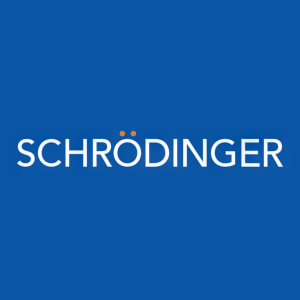Schrödinger Announces FDA Clearance of Investigational New Drug Application for SGR-1505, a MALT1 Inhibitor
Schrödinger, Inc. (Nasdaq: SDGR) announced FDA clearance for its investigational new drug (IND) application for SGR-1505, a MALT1 inhibitor. Anticipated to begin a Phase 1 clinical trial in the second half of 2022, the study will target patients with relapsed or refractory B-cell lymphoma. The trial aims to assess the safety and effectiveness of SGR-1505. The company emphasizes the significant medical need for new treatments in this area, promising to explore combination therapies once the recommended dose is established.
- FDA clearance of IND for SGR-1505 signifies an important milestone for Schrödinger's MALT1 program.
- Phase 1 clinical trial set to initiate in the second half of 2022, focusing on a significant unmet medical need.
- Clinical development is still in early stages, introducing risks and uncertainties inherent to drug development.
Phase 1 Clinical Trial in Patients with Advanced B-Cell Malignancies Expected to Begin in the Second Half of 2022
“Based on the preclinical data for SGR-1505, we believe we have an opportunity to advance a potential best-in-class MALT1 inhibitor into the clinic,” stated
The planned multi-center, dose-escalation study will be conducted in patients with relapsed or refractory B-cell malignancies to evaluate the safety, pharmacokinetics, pharmacodynamics, and preliminary signals of therapeutic activity of SGR-1505 as a monotherapy. Once the recommended dose is determined, an expansion cohort is planned to evaluate SGR-1505 in combination with other anti-cancer agents, such as BTK and BCL-2 inhibitors, in patients with specific B-cell malignancies.
“Our platform, which combines physics and machine learning, enabled us to accurately assess 8.2 billion compounds computationally and to synthesize only 78 molecules over a 10-month period of iterative “design, make, test” optimization cycles, ultimately selecting SGR-1505 as our development candidate,” said
About SGR-1505
SGR-1505 is a mucosa-associated lymphoid tissue lymphoma translocation protein 1 (MALT1) inhibitor that was discovered using Schrödinger’s proprietary physics-based computational platform. MALT1 is a protease that is downstream of Bruton’s tyrosine kinase (BTK), in the NF-kB signaling pathway. Constant activation of NF-kB is a hallmark of several subtypes of lymphoma. MALT1 is considered a potential therapeutic target for several non-Hodgkin’s B-cell lymphomas. Data presented at the
About Schrödinger
Schrödinger is transforming the way therapeutics and materials are discovered. Schrödinger has pioneered a physics-based software platform that enables discovery of high-quality, novel molecules for drug development and materials applications more rapidly and at lower cost compared to traditional methods. The software platform is used by biopharmaceutical and industrial companies, academic institutions, and government laboratories around the world. Schrödinger’s multidisciplinary drug discovery team also leverages the software platform to advance collaborative programs and its own pipeline of novel therapeutics to address unmet medical needs, including eight compounds currently in clinical development.
Founded in 1990, Schrödinger has over 700 employees and is engaged with customers and collaborators in more than 70 countries. To learn more, visit www.schrodinger.com follow us on LinkedIn and Twitter, or visit our blog, Extrapolations.com.
Cautionary Note Regarding Forward-Looking Statements
This press release contains forward-looking statements within the meaning of The Private Securities Litigation Reform Act of 1995 including, but not limited to those regarding the expected timing of the initiation of a Phase 1 clinical trial of SGR-1505, the therapeutic potential of SGR-1505, the potential of MALT1 inhibitors, including SGR-1505, to be used for the treatment of certain subtypes of non-Hodgkin’s B-cell lymphomas and for other B-cell lymphomas such as mantle cell lymphoma, and the potential for SGR-1505 to be used in combination with other anti-cancer agents. Statements including words such as "anticipate," "believe," "contemplate," "continue," "could," "estimate," "expect," "intend," "look forward," "may," "might," "plan," "potential," "predict," "project," "should," "target," "will," "would" and statements in the future tense are forward-looking statements. These forward-looking statements reflect Schrödinger’s current views about its plans, intentions, expectations, strategies and prospects, which are based on the information currently available to the company and on assumptions the company has made. Actual results may differ materially from those described in these forward-looking statements and are subject to a variety of assumptions, uncertainties, risks and factors that are beyond Schrödinger’s control, including the uncertainties inherent in early stage drug development, including the conduct of research activities, the initiation and completion of preclinical studies and clinical trials; uncertainties as to the availability and timing of results from preclinical studies; the company’s ability to enroll patients in its planned clinical trials; whether results from preclinical studies will be predictive of the results of later preclinical studies and clinical trials, as well as the other risks and uncertainties identified under the caption "Risk Factors" and elsewhere in the company’s
View source version on businesswire.com: https://www.businesswire.com/news/home/20220628005165/en/
Investors:
Schrödinger, Inc.
jaren.madden@schrodinger.com
617-286-6264
Media:
Schrödinger, Inc.
tracy.lessor@schrodinger.com
617-519-9827
Source: Schrödinger, Inc.
FAQ
What is SGR-1505 being developed for by Schrödinger (SDGR)?
When is the Phase 1 clinical trial for SGR-1505 expected to begin?
What does FDA clearance of the IND for SGR-1505 mean for Schrödinger (SDGR)?
What are the goals of the planned Phase 1 clinical trial for SGR-1505?







